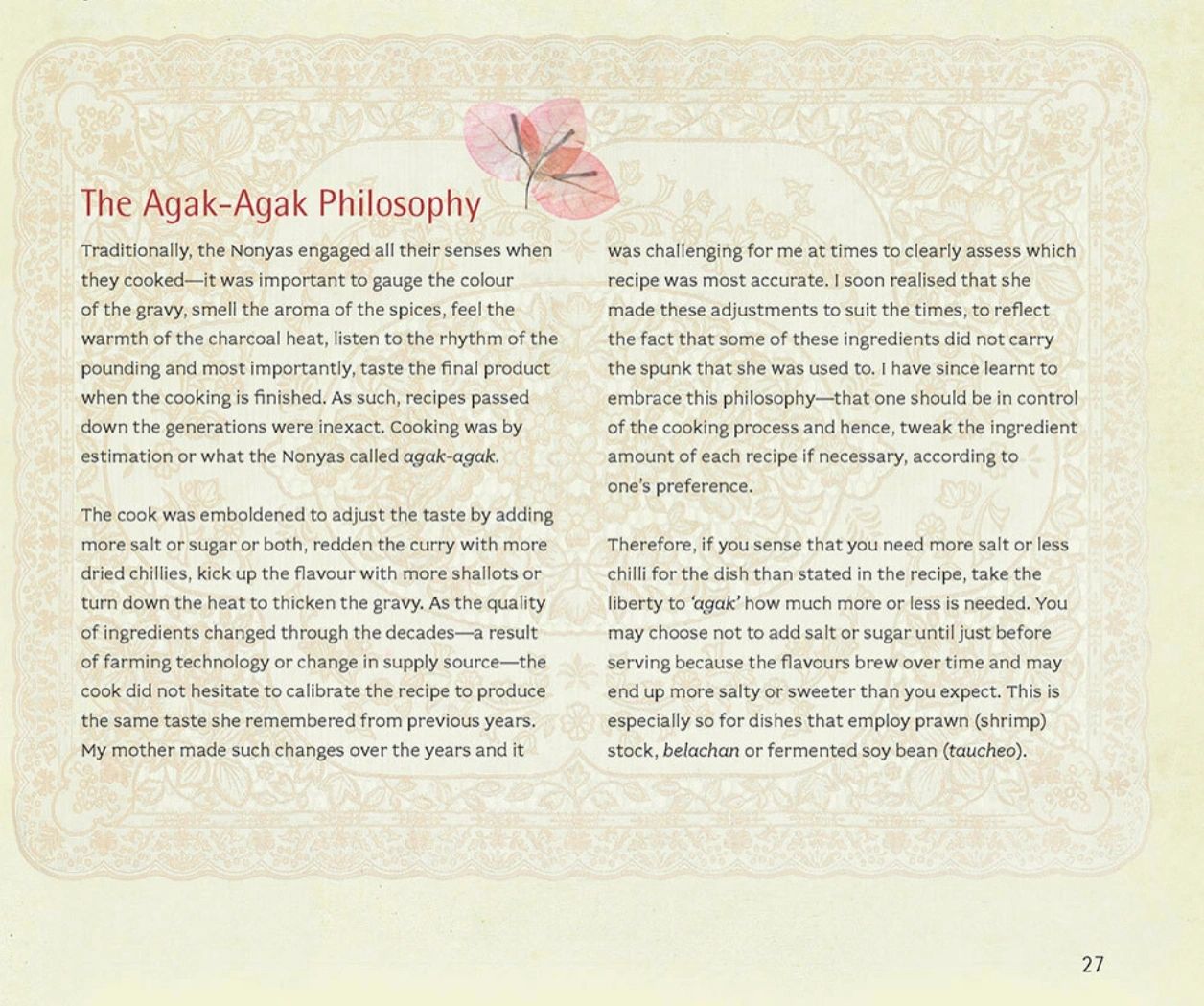My husband went through a phase of wearing sweatpants everywhere, like George Costanza in Seinfeld. I told him that he could not wear it to our anniversary dinner at Jean-Georges, the upscale French restaurant. As luck would have it, we ran into the actor Mark Wahlberg who was leaving the restaurant, wearing sweatpants.
“See? I could have come in sweatpants!”, my husband exclaimed.
“You are NO Marky Mark”, I shot back with a dirty look.
At the end of that meal, I got the chef to sign his new cookbook. I told Jean-Georges Vongerichten that I was from Singapore and was working on a cookbook. He left an autograph for me that said, “Season with your senses.”
The man knew what he was talking about, having previously worked in Thailand and Singapore. His words distilled my thoughts about the “Agak Agak Philosophy” I had been mulling about and directed my opening paragraph about cooking with your senses.
My mother left us with multiple versions of the same recipe, sneaking in tweaks here and there to the amount for certain ingredients – chillies, salt, vetsin, water, belachan, etc. I could not fathom why. Having grown accustomed to straight-laced recipes strictly specified down to the last drop, the loosey-goosey approach stressed me out. It was compounded by an anecdote by my nieces who told me that they never ventured beyond ondeh ondeh (a dessert) because “Mama simply used her fingers to do everything”. In that, she measured ingredients by pinching the ingredients, to kneading the dough and to tasting the final product by licking her fingers.
Then, I came across a remark in a cookbook foreword where the writer lamented that the recipes did not capture the actual taste of the dishes from years ago, that perhaps the ingredients had changed. That got me thinking how true it was. When I scouted for dried chillies in a Chiangmai market, the shopkeeper taught me to rest my palm on the chillies in the sack, to “feel the heat”. Similarly, belachan from one source could be so much more salty than from another purveyor.
So that was how I came up with……
The Agak Agak Philosophy
Traditionally, the Nonya engaged all their senses when they cooked – it was important to gauge the color of the gravy, smell the aroma of the spices, feel the warmth of the charcoal heat, listen to the rhythm of the pounding and most importantly, taste the final product when the cooking is finished. As such, recipes passed down the generations were inexact. Cooking was by estimation or what the Nonyas called agak-agak.
The cook was emboldened to adjust the taste by adding more salt or sugar or both, redden the curry with more dried chillies, kick up the flavour with more shallots or turn up or down the heat to thicken the gravy. As the quality of ingredients changed through the decades – a result of farming technology or change in supply source – the cook did not hesitate to calibrate the recipe to produce the same taste she remembered from previous years. My mother made such changes over the years and it was challenging for me at times to clearly assess which recipe was most accurate. I soon realized that she made these adjustments to suit the times, to reflect the fact that some of these ingredients did not carry the spunk that she was used to. I have since learnt to embrace this philosophy – that one should be in control of the cooking process and hence, tweak the ingredient amount of each recipe if necessary, according to one’s preference.
Therefore, if you sense that you need more salt or less chilli for the dish than stated in the recipe, take the liberty to ‘agak’ how much more or less is needed. You may choose not to add salt or sugar until just before serving because the flavors brew over time and may end up more salty or sweeter than you expect. This is especially so for dishes that employ prawn (shrimp) stock, belachan or fermented soy bean (taucheo).
Copyright © 2012 Sharon Wee. All rights reserved.
